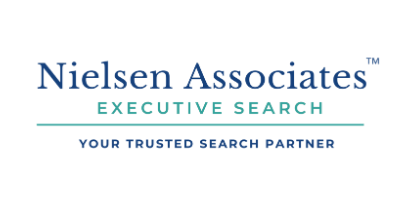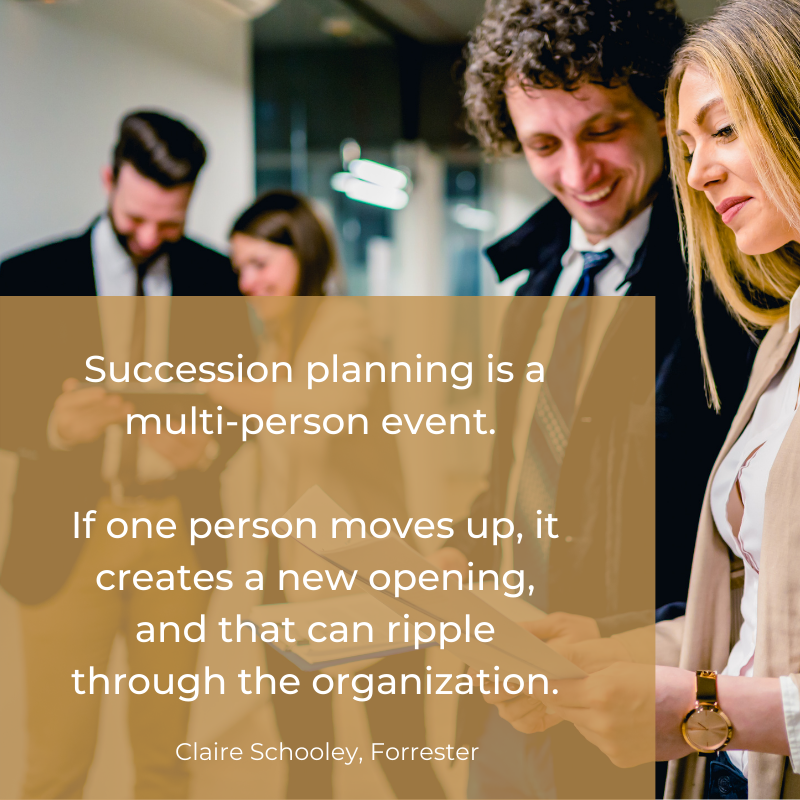In this blog, we use succession planning and leadership continuity interchangeably. Succession planning allows companies to effectively handle employee turnover by taking a proactive approach. It’s the process of identifying future leaders in your company and preparing them — so that they are ready to transition to leadership roles when there’s a vacancy. But it’s about more than turnover. When you integrate succession planning with your vision for the future, companies can put talent strategies in place to create a competitive edge in a saturated, global marketplace. When succession planning becomes a culture highlight, employees know they work for a company where their career goals matter; and that there are resources dedicated to their professional growth and mobility.
6 Reasons to Invest in Succession Planning & How to Start
Succession Planning is the Human Side of Business Continuity

What is Succession Planning?
Top 6 Reasons to Invest in Succession Planning
In the third quarter of 2020, roughly 28.6 million Baby Boomers have left the job market and retired, according to the Pew Research Center. And it’s worth noting that within the talent acquisition industry, and amongst corporates, guidance to “change careers every three to five years” has been popular advice for some time. Aside from reducing the impact of natural turnover, here are 5 more reasons to make Succession Planning a priority:
List of Services
-
List Item 2
List Item 2Reduce the impact of natural turnover.
-
List Item 3List Item 3
Implement a true business continuity plan that goes beyond systems.
-
List Item 4List Item 4
Execute your strategic roadmap.
-
New List Item
Improve information flow and communications.
-
New List Item
Retain and attract top talent.
-
New List Item
Promote a diverse, multi-generational corporate culture.
Breaking it Down: 4 Key Succession Planning Activities
Step 1- Assess existing organizational knowledge.
To start, zoom in and take a close look at your organization. With succession planning, the focus is on the people at your company — what they do, how they learn, and what is expected to be successful. Here’s a high-level example of questions you may start with:
- What are we doing now?
- Who does it?
- What skills and knowledge do they currently have?
- How do individual employees obtain organizational knowledge throughout their tenure?
Companies may conduct a blend of assessments to obtain accurate answers —including surveys, 360-degree interviews, job-shadowing, job-description audit and analysis, and performance appraisal audits. Typically assessments take place department-by-department, and role-by-role.
Step 2- Assess your future needs.
Once you’ve got an accurate snapshot of today, shift your focus to the future of your organization. Start with these high-level questions:
- What are our future strategic plans?
- What is on the Company’s strategic roadmap?
- What are the needed skill sets for future projects?
It’s helpful to look forward in increments. Ask the Succession Planning Team to project future strategic initiatives (and the talent needed) in 3, 5, 7 and 10 year increments from today.
Acknowledge skill gaps that exist currently; and treat them as a catalyst. Skill gaps are opportunities to make improvements and enhancements to the knowledge management systems and career development programs at your company. (See steps 3 - 4 for more on this.)
Step 3- Align Leadership and Human Resources with future vision.
Be as transparent as possible during the process, and make sure key contributors within your organization are onboard. To start, this includes your Executive Leadership team, plus Talent Acquisition, Learning and Development, and Diversity Leaders.
Ultimately, as your Leadership Continuity strategy matures, all hiring managers would take part in Succession Planning as they develop and grow their teams. And all employees would participate in career development programs that are designed to engage them on a career path that’s rewarding.
Leadership Continuity & the Role of HR
Human Resources leaders can make an impact by coordinating all initiatives with a vision for the future and continuity in mind:
- Recruiting efforts should emphasize the skillsets that are needed for future initiatives that are on the company’s strategic roadmap. Update job descriptions with respect to future skill sets, and structure new roles when necessary. And when recruiting internally, Human Resources leaders can ensure that a diverse group of qualified employees are included as candidates.
- Professional development programs centered on career paths ensure that there’s a robust and diverse internal talent pipeline. This includes skills training, and career coaching & mentoring programs that can be designed and implemented by an in-house Learning and Development team or vendor.
- Inclusive programs that focus on the transfer and retention of organizational knowledge and culture can be designed and implemented. Examples include onboarding programs for new team members at every level; retention strategies that engage and motivate future leaders; plus transitional off-boarding when an employee departs.
Step 4- Put Knowledge transfer systems and programs in place.
Connect Everything with Tech
Continuity planning is often an eye-opening experience. Many companies uncover opportunities to improve information flow through greater integration. It's an opportunity to get knowledge and data out of “silos,” so that it's more accessible. Information silos exist when information isn’t shared between departments, business divisions, or technology applications. Silos can cause a variety of problems - including inefficient operations and resource utilization.
Onboarding
It’s important to emphasize that new hire orientation (where a new employee completes necessary paperwork and benefit elections) is not the same as new hire onboarding. Effective onboarding is an inclusive welcome process that acclimates employees (at every level) into an organization’s culture. Onboarding can span several days, weeks, or months. During onboarding, new hires are given the tools and information needed to be productive team members. Research by Glassdoor found that organizations with a strong onboarding process improve new hire retention by 82 percent and productivity by over 70 percent.
Mentoring
Consider complimenting the traditional skills-training curriculum with mentoring programs to forge strong, supportive, and diverse employee relationships. This is an opportunity to blend diverse generational perspectives, skill-sets, and experience levels. Mentoring programs are effective because they offer employees situational guidance to tackle real business challenges, resulting in optimal knowledge and culture transfer.
Make Nielsen Associates Part of your Leadership Continuity Plan
Our specialized recruiters can help you address skills gaps that exist and recruit for new positions and vacancies. We have a large talent pipeline to fill any Human Resources, Marketing, or Finance and Accounting role. Request a free consultation to talk with our team.













